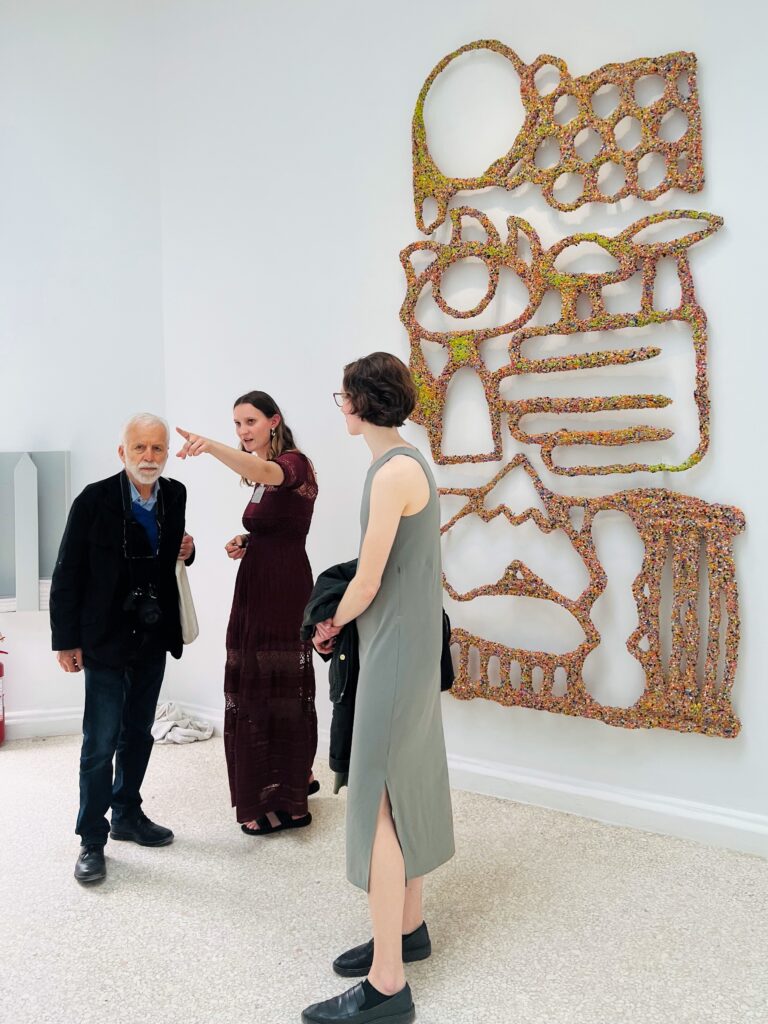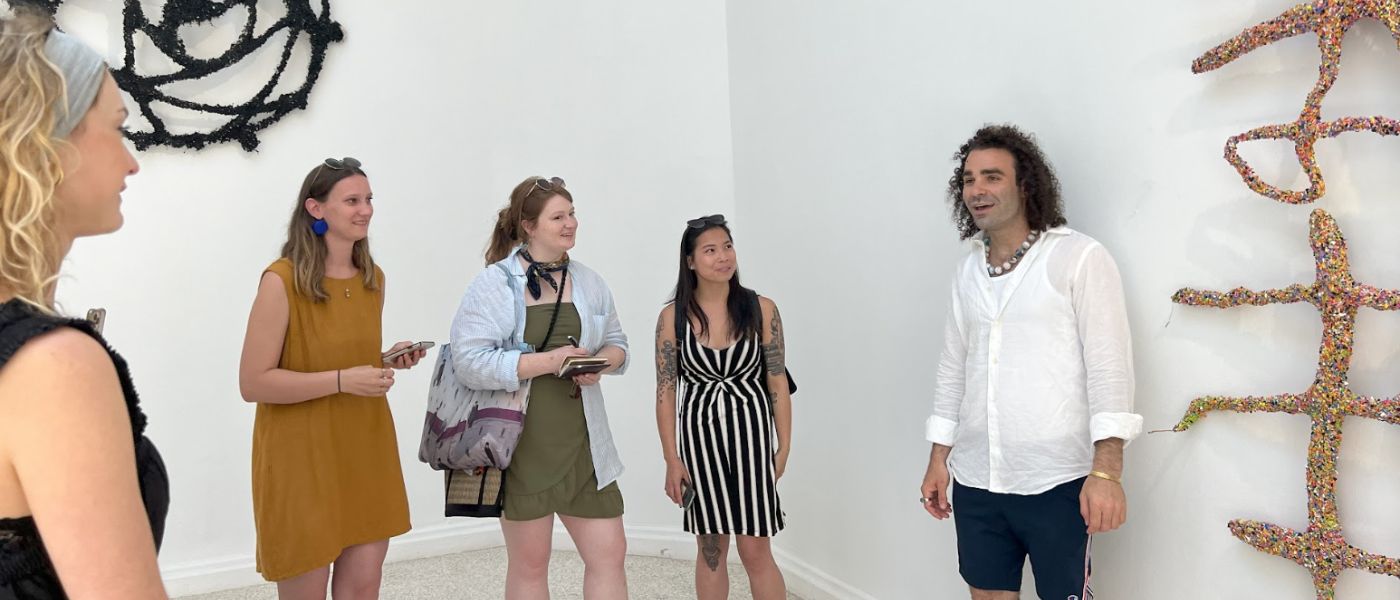Few people can say they’ve been part of one of the most highly regarded art displays in the world.
But now, eight Case Western Reserve University art history students can add the accomplishment to their résumés.
Through the class “Issues in 20th/21st Century Art: Plastocene Era: Art, Plastics and the Future of the Planet,” the students helped a local nonprofit art gallery work on the United States’ pavilion at the 2023 Architettura Biennale in Venice, Italy. This international architecture festival features projects from as many as 75 countries, including the U.S. exhibition organized by Cleveland’s own SPACES gallery. The U.S. Department of State’s Bureau of Educational and Cultural Affairs selected SPACES to commission artists and develop the exhibition, which features five artists’ work under the theme Everlasting Plastics.
Co-curated by Tizziana Baldenebro, executive director of SPACES, and Lauren Leving, curator at the Museum of Contemporary Art Cleveland—both of whom served as community partners for the CWRU course—Everlasting Plastics aims to address the global crisis of petro-chemical plastic proliferation and waste. Specifically, it confronts the “ideology of disposability” through art and design as “agents of change,” exposing the “cultural, political, and social systems embodied by plasticity.”
Hands-on involvement
To help bring Everlasting Plastics to an international audience, the art history students dove into contextual studies in their class, a one-time course for the university’s Certificate in Public Humanities and Civic Engagement. Throughout the class, which was developed and taught by Andrea Wolk Rager, associate professor in the Department of Art History and Art, they studied:
- the central themes of the exhibition through interdisciplinary dialogue;
- the history and emergence of plastics as an industrial product;
- the rising global environmental crisis of plastic pollution; and
- how artists have engaged with plastic as a medium for critiquing and raising awareness of its pervasive impact.
“We explored the local and global networks of plastic consumption, plastic waste, and plastic futures, connecting Lake Erie to the Venice Lagoon, as a vital component of social and environmental justice,” said Rager.
Once they left the classroom, Rager’s students served as programmatic partners for the exhibit. They organized three events to bring ideas from the Venice Biennale to the Cleveland community, including:
- A student engagement event April 28 for CWRU’s Macromolecular Engineering Sustainability Day, which debuted the Kent Hale Smith Building’s newly installed Everlasting Plastics sculptures by participating artist Lauren Yeager through CWRU’s Putnam Collection;
- A town hall-style event for the larger community, which took place May 6 at the Health Education Campus and featured local community organizations and a virtual panel with Baldenebro, Leving, and contributing artists; and
- A symposium, “Canal to Cuyahoga: Everlasting Plastics in Context,” set to take place Oct. 7 at the Cleveland Museum of Art. It will feature invited panelists, a keynote speaker and community representatives.

Second-year Master of Arts in Art History student Portia Silver co-organized the town hall event, which she said allowed for a “unique convergence of the local and global, echoing the proliferation of plastic across the world.
“Talking with the curators and artists of Everlasting Plastics in Venice emphasized the important issues of plastic production and use in an international landscape,” she added, “and the interaction with community partners in Cleveland led to important conversations about sustainability and politics as we grapple with both the personal limitations and collective possibilities for environmental justice.”
International impact
The students also contributed to the exhibition by offering editorial insight into Sketches, a series of short essays published at the event’s opening. Ruth Bryant, a rising fourth-year student double majoring in art history and biology, said helping with the publication enabled her to have an impact on an international level.
“This class [was] enriching in many ways,” said Bryant, who received a grant from the Baker-Nord Center for the Humanities to travel to Venice. “It is an honor to be a part of the exhibition and hear firsthand from the curators [about] the development process of putting together such an amazing exhibition with such a short time span.”
Other students, such as second-year Master of Arts in Art History student Rebekah Utian, were able to visit Venice in June. Utian, as well as a few of her peers, received funding for the trip through the Eva L. Pancoast Memorial Fellowship.
Being able to attend the Biennale with her classmates—and feeling as though she had some insider knowledge of the process and core themes of one of the pavilions—made the experience “so much more meaningful” to Utian.
“Taking part in Professor Rager’s course also primed me to be more aware of the many moving parts that would have gone into each pavilion,” Utian noted. “This background made me feel more equipped to grasp and appreciate the magnitude of the Biennale.”
Keep an eye on SPACES’ Instagram to learn more about the symposium in October, and find out more about Everlasting Plastics.

